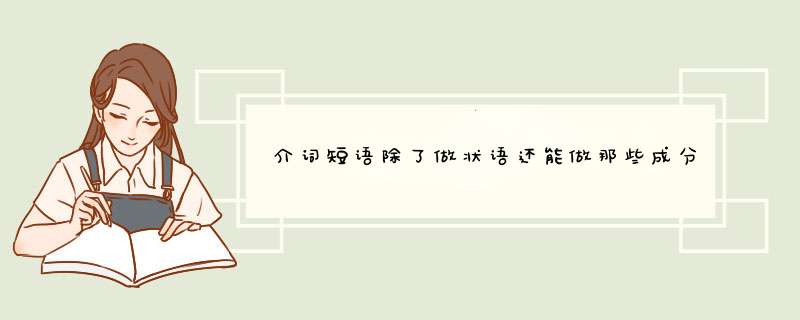
1作主语:From
Beijing
to
Tianjing
is
two
hours
by
train
2表语:He
is
from
New
York
3作宾语:I’ll
give
you
until
tomorrow(注意翻译:我给你期限到明天。)
4作定语:a
friend
of
mine,a
man
in
black
5作状语:这个你知道了。
6作补语:They
found
themselves
in
a
dark
wood他们分现自己黑森林中。(作宾补)
介词不能单独作句子成分,但由介词和介词宾语构成的介词短语却可以作多种句子成分。现将其用法归纳如下:
一、与动词be连用,充当表语。例如:
Li Lei, is it in your right hand 李雷,它在你的右手里吗?
二、充当定语。介词短语作定语须放在被修饰词的后面。例如:
The book on the desk is mine 书桌上的书是我的。
Who\'s the boy in the middle 中间的那个男孩是谁?
三、充当状语,用于修饰动词或整个句子,常放在句末,也可置于句首。例如:
On that day everyone eats mooncakes 在那一天大家都吃月饼。
We go to school at seven o\'clock in the morning 我们早上七点去上学。
四、充当宾语补足语。例如:
They must keep their hands behind their backs 他们必须把手放在他们的背后。
到目前为止,我们学过的介词短语有:at home(在家); at school(在学校); at night(在夜里); at the weekend (在周末); by bus (bike, ship, plane, train)乘公共汽车(自行车、轮船、飞机、火车),in the open air(在户外), on foot(步行)等。
五、关于介词短语的两个注意事项:
1 注意介词短语与短语介词的区别
短语介词是相当于一个介词的词组,它不能单独作句子成分。如:in front of, at the back of, next to等。介词短语是由“介词+宾语”或“短语介词+宾语”构成的,它可以单独充当句子成分。如:in the bag, near the door, in front of the house等。
2 注意介词的宾语形式
介词短语若是“介词+代词”结构,要注意其后面的代词应是宾格,而不能用主格。例如:
Who sits behind him谁坐在他后面?
希望能帮到你。
介词后的部分叫作宾语,介词加上这个宾语就叫作介宾短语,它们在句中可作定语,状语,表语,补语,例子如下:
1The book on the desk is mine(on the desk 就是介宾短语作定语)
2On hearing the news,she couldn't help crying(on hearing the news作状语)
3They are at work(at work作表语)
4Please leave it on the desk when you finish reading the book(on the desk作宾语补语)
介宾短语就是介词和宾语所构成的短语。介宾短语的主要作用是在句子中作状语。在英语中,这类的短语有很多,如:on the desk中,the desk是作介词on的宾语,合在一起构成了一个介词短语。再如,in the river,in front of the classroom等。
资料来源:网页链接
欢迎分享,转载请注明来源:品搜搜测评网

 微信扫一扫
微信扫一扫
 支付宝扫一扫
支付宝扫一扫
